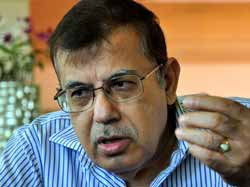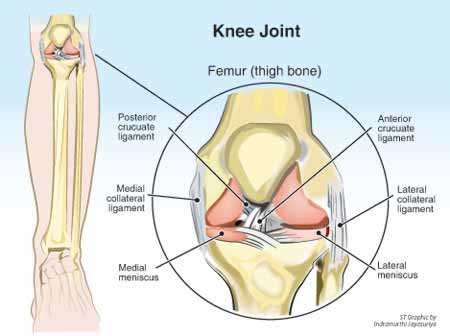Keep both your feet together and squat – this was the simple test that Orthopaedic Surgeon Dr. Amit Kanta Mitra challenged us to perform, but we dared not amidst the bustle of a five-star hotel in Colombo.
The test is to check whether the leg muscles are tight and can be carried out by any mother on her child to ascertain whether there is a problem with tight muscles, says Dr. Mitra from the Singapore General Hospital in an exclusive interview with MediScene recently.
 |
| Dr. Amit Kanta Mitra. Pic by Mangala Weerasekera |
If a person can squat as asked, the muscles are loose. If not, they are tight and will not only affect the ankle but also the knee, he says, stressing that the answer is to stretch, stretch and stretch, not strengthen.
The other factors that cause knee trouble are being overweight, injuries or diseases such as arthritis, MediScene learns. Injuries could result from road accidents to those suffered on the sports field while any injury to the joint including broken bones could have an adverse impact on the knee.
When a person with knee issues attempts to climb stairs, squat or kneel there will be pain, says Dr. Mitra putting the all-important knee under the microscope. While sports could cause knee injuries in the young, the culprit for the middle-aged will be arthritis and the elderly (in the age-group 55-80) advanced arthritis.
Stretching of tight muscles should start from the time a child is in school. Stretching exercises when young will prevent knee problems when old, he says, strongly advising people to engage in such activity as jogging and yoga, while also preventing as far as possible any injuries to the knee.
When MediScene queried whether slipping on those high-heeled shoes could cause knee injuries, Dr. Mitra was quick to point out that the answer would be “Yes”, if a person had tight muscles. “If you have tight muscles and wear high heels they will affect the knee and the back.”
Going onto the advanced treatment procedures that he performs at the Singapore General Hospital, this Knee Specialist focuses on the options, from the simple to the complex, available for knee issues. Numerous are the key-hole procedures he has performed to cure or minimize the problems resulting from a tight muscle.
If the injury is to the cartilage including the meniscus, the shock-absorbing wedge of cartilage, surgery can be performed to remove the small parts affected or repair the damaged areas or even transplant some cartilage from healthy parts of the joint to the damaged areas, says Dr. Mitra.
Another option is micro-fracture surgery, he points out, detailing how it is carried out, with a special instrument being used to drill small holes 4mm deep and 6mm wide in the damaged area of the knee. This allows the stem cells from the bone marrow to come up with the blood and settle in the relevant area to multiply and recreate the cartilage.
As the knee on which microfracture has been performed needs to be protected but also strengthened, the patient needs to be on a machine called continuous passive motion (CPM) for about three months. No weight should be put on that knee, as the new cells should not get disturbed but allowed to grow, he says, explaining that this treatment is usually for younger people.
‘Dissecting’ the knee for MediScene, Dr. Mitra says it has three compartments – the inner and outer sides and the area behind the knee-cap. In older people, depending on the extent of damage to the knee, partial or total knee replacement surgery will be the answer.
Under this procedure, either a part of the knee is replaced or the full cartilage is removed and an implant inserted, it is understood. The replacement will depend on which compartment is affected.
Depending on how far arthritis has affected the knee, only the affected part will be replaced but if the disease has advanced then it will be complete replacement. In replacement surgery, alignment is better achieved through computer support, he says.
Referring to bone ailments in different countries, this Knee Doctor who has won many awards and made many presentations points out that Singapore General Hospital is well-known as an “artificial knee centre” due to pioneering work undertaken there. He explains that in general, knee trouble is common in Singapore and Sri Lanka as opposed to hip trouble in India and China.
People are terrified about knee surgery and keep postponing it even though they have crippling pain. Long before the condition gets aggravated compelling knee replacement, it is better to undergo a simple 15-minute operation to loosen the muscle which will cure the victim or minimize the symptoms, adds Dr. Mitra.

|
